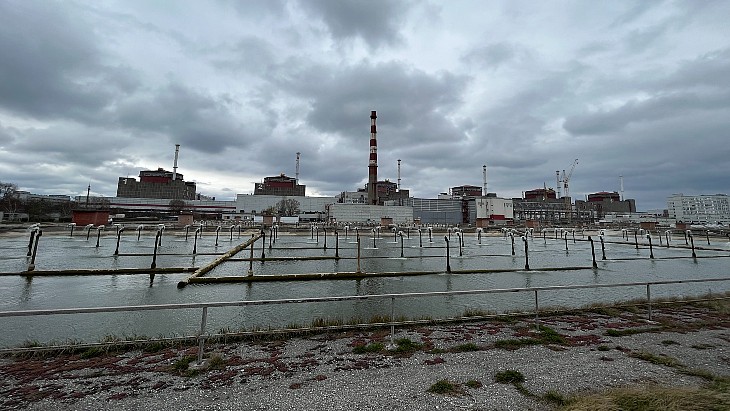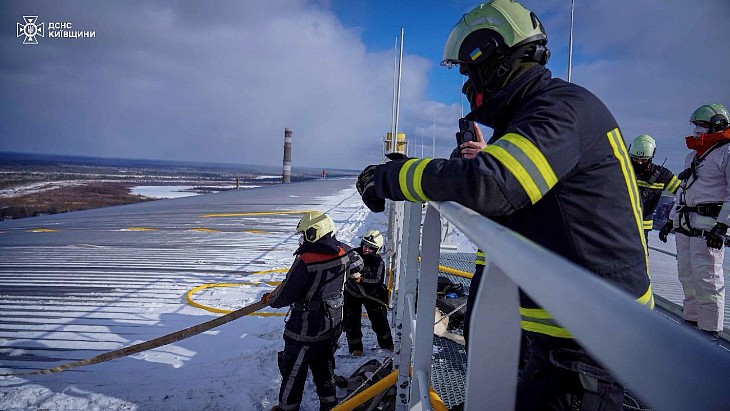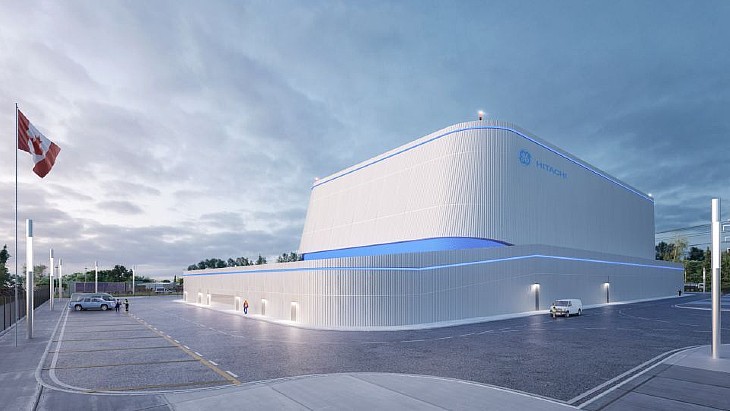Groundwater extraction begins at Zaporizhzhia

The collapse of the downstream dam on 6 June and the subsequent loss of much of the water in the Kakhovka reservoir, which the plant had been using for its cooling needs, forced the plant to take steps to protect the bodies of water still available to it, including a large cooling pond next to the site, and to start looking for alternative sources of water.
The International Atomic Energy Agency (IAEA), which is maintaining a team of experts at the site, said a new groundwater well, located close to the plant's sprinkler ponds, has already been commissioned and is now providing about 20 cubic metres of water per hour. An additional 10-12 wells around the perimeter of the sprinkler ponds are planned.
The site's large cooling pond and its other main supply of water - the discharge channel of the nearby Zaporizhzhia Thermal Power Plant (ZTPP) - remain intact, the IAEA experts said. The height of the nuclear power plant's cooling pond continues to drop by about 1 centimetre per day while water from the ZTPP inlet channel is regularly pumped into its discharge channel to compensate for water used for cooling or lost through natural evaporation. The IAEA said the site has sufficient cooling water for many months.
"The plant continues to take action to address the additional challenges caused by the loss of the Kakhovka dam some ten weeks ago," said IAEA Director General Rafael Mariano Grossi. "The fact that more wells will be built should add to the water reserves available for cooling. However, the overall nuclear safety and security situation remains precarious."
Steam production
The six-unit Zaporizhzhia plant is the largest in Europe and has been under Russian military control since early March 2022.
The State Nuclear Regulatory Inspectorate of Ukraine issued regulatory orders in June for all six units to be placed in cold shutdown, given its situation on the frontline of the war, and the breaching of the Kakhovka dam that had helped ensure plentiful cooling water supplies. The Russian operators of the plant say such a move is not required from a "legal or technological point of view".
The IAEA has urged investigation into whether an external boiler could be installed at the site to generate the steam required, so all units could be moved to cold shutdown.
Zaporizhzhia unit 6 has been generating steam for various nuclear safety purposes at the plant - including the processing of liquid radioactive waste - since 13 August when it reached a hot shutdown state, replacing the steam previously produced by unit 4. ZNPP began transferring unit 4 from hot shutdown to cold shutdown following the detection of a water leak at one of its four steam generators.
The IAEA said the cause of the leak, as later confirmed by the site, was due to a hairline crack in the weld of the steam generator primary header vent pipe. Last week, the site performed welding on the pipe and pressure testing of the steam generator was subsequently conducted, the IAEA team was informed. Final tests involving the primary and secondary circuits are in progress.
The IAEA said it continues to strongly encourage the installation of an external source of process steam, which, from a nuclear safety perspective, would provide the safest longer-term solution at the site. The IAEA has offered its assistance with this issue.
"In a possible step in this direction, the IAEA team was informed that the ZNPP has initiated a process to buy an external steam generator by sending technical requirements to possible vendors," the agency said.










_88592.jpg)

